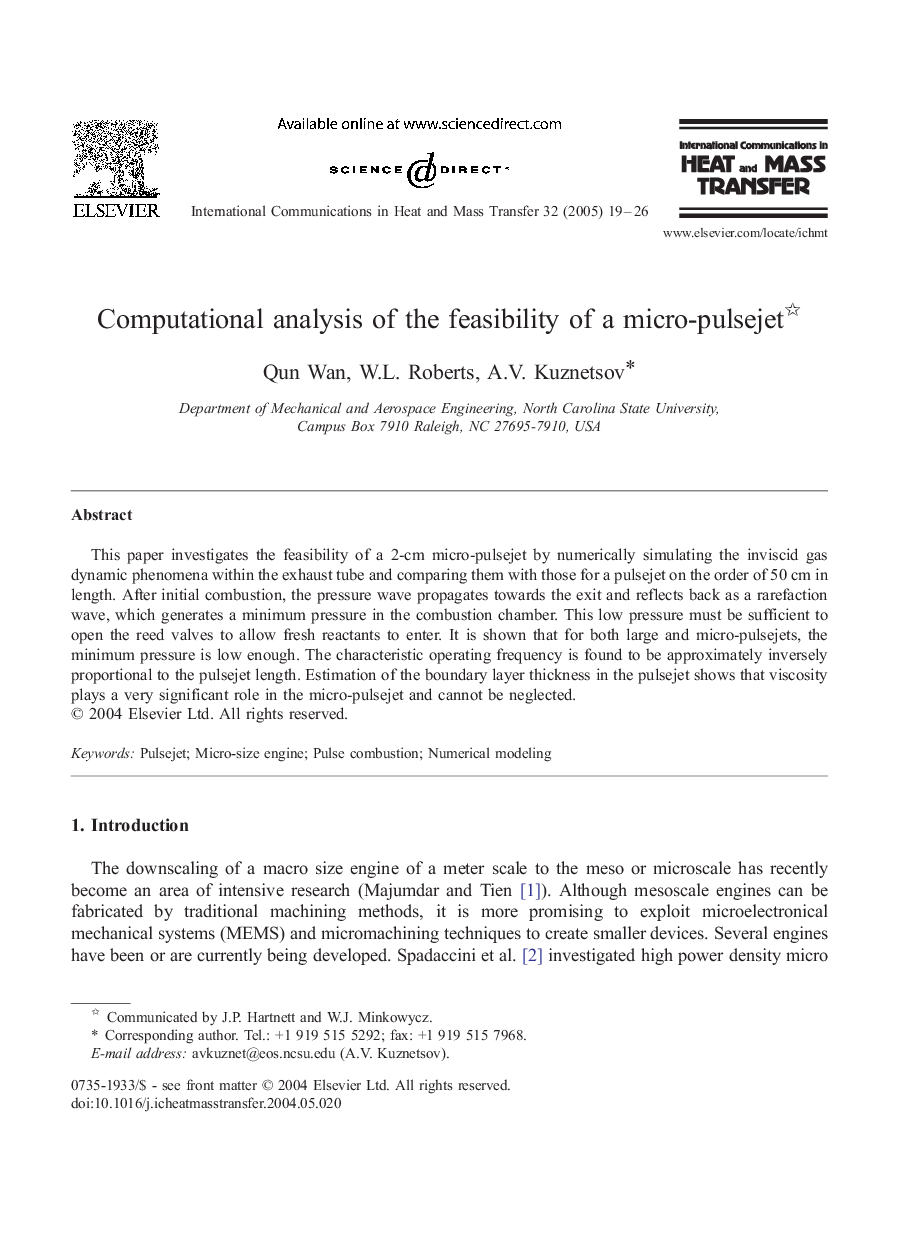| Article ID | Journal | Published Year | Pages | File Type |
|---|---|---|---|---|
| 9691040 | International Communications in Heat and Mass Transfer | 2005 | 8 Pages |
Abstract
This paper investigates the feasibility of a 2-cm micro-pulsejet by numerically simulating the inviscid gas dynamic phenomena within the exhaust tube and comparing them with those for a pulsejet on the order of 50 cm in length. After initial combustion, the pressure wave propagates towards the exit and reflects back as a rarefaction wave, which generates a minimum pressure in the combustion chamber. This low pressure must be sufficient to open the reed valves to allow fresh reactants to enter. It is shown that for both large and micro-pulsejets, the minimum pressure is low enough. The characteristic operating frequency is found to be approximately inversely proportional to the pulsejet length. Estimation of the boundary layer thickness in the pulsejet shows that viscosity plays a very significant role in the micro-pulsejet and cannot be neglected.
Keywords
Related Topics
Physical Sciences and Engineering
Chemical Engineering
Fluid Flow and Transfer Processes
Authors
Qun Wan, W.L. Roberts, A.V. Kuznetsov,
